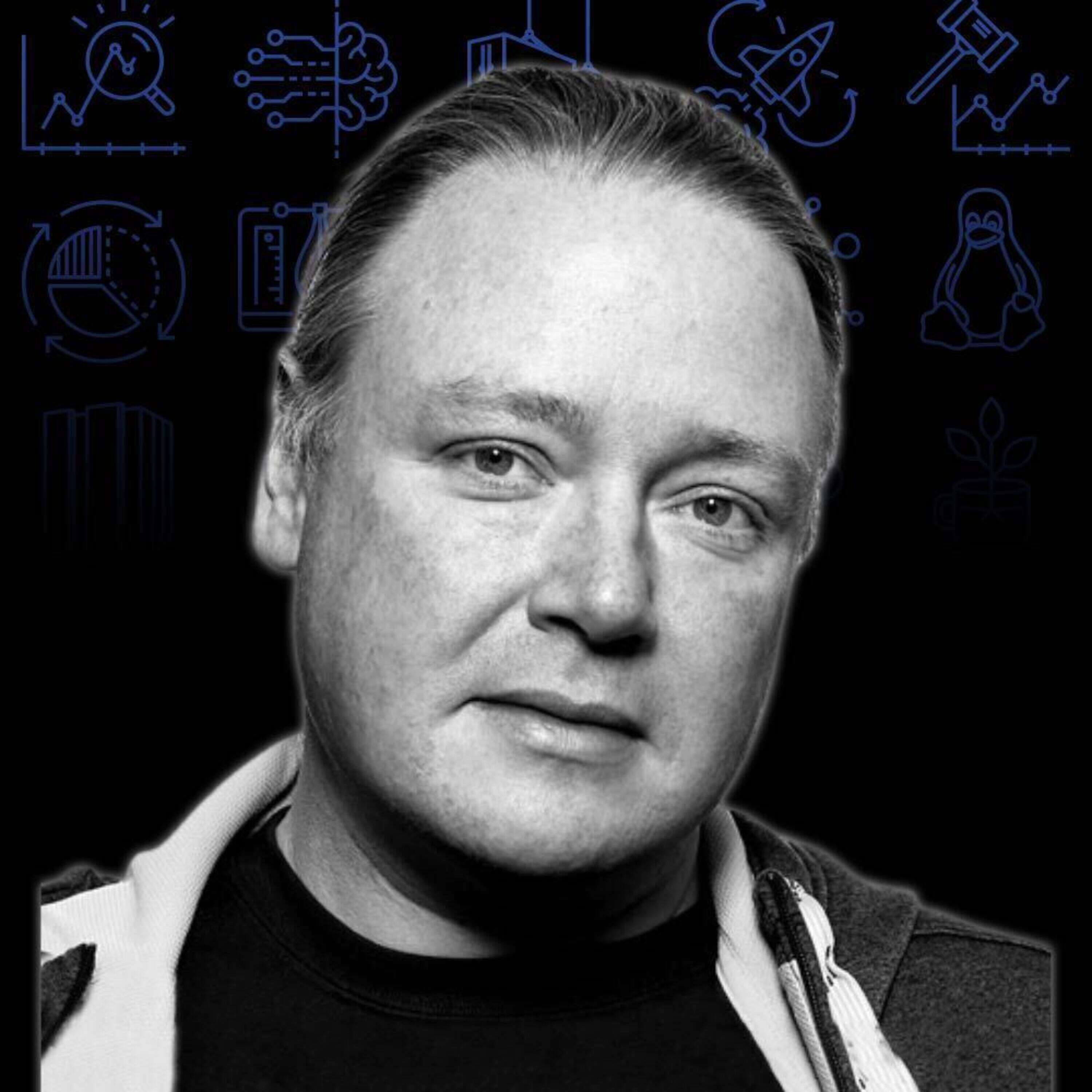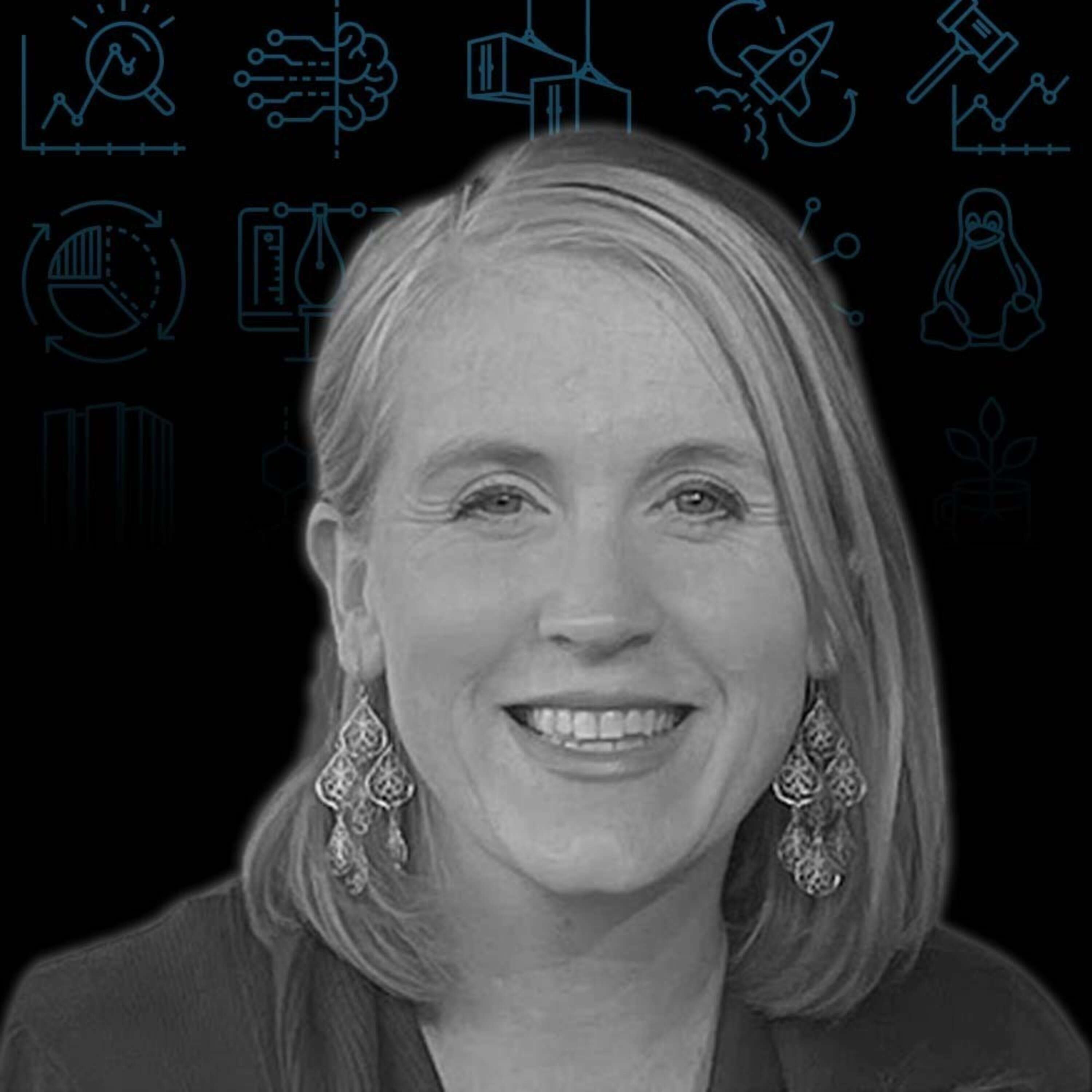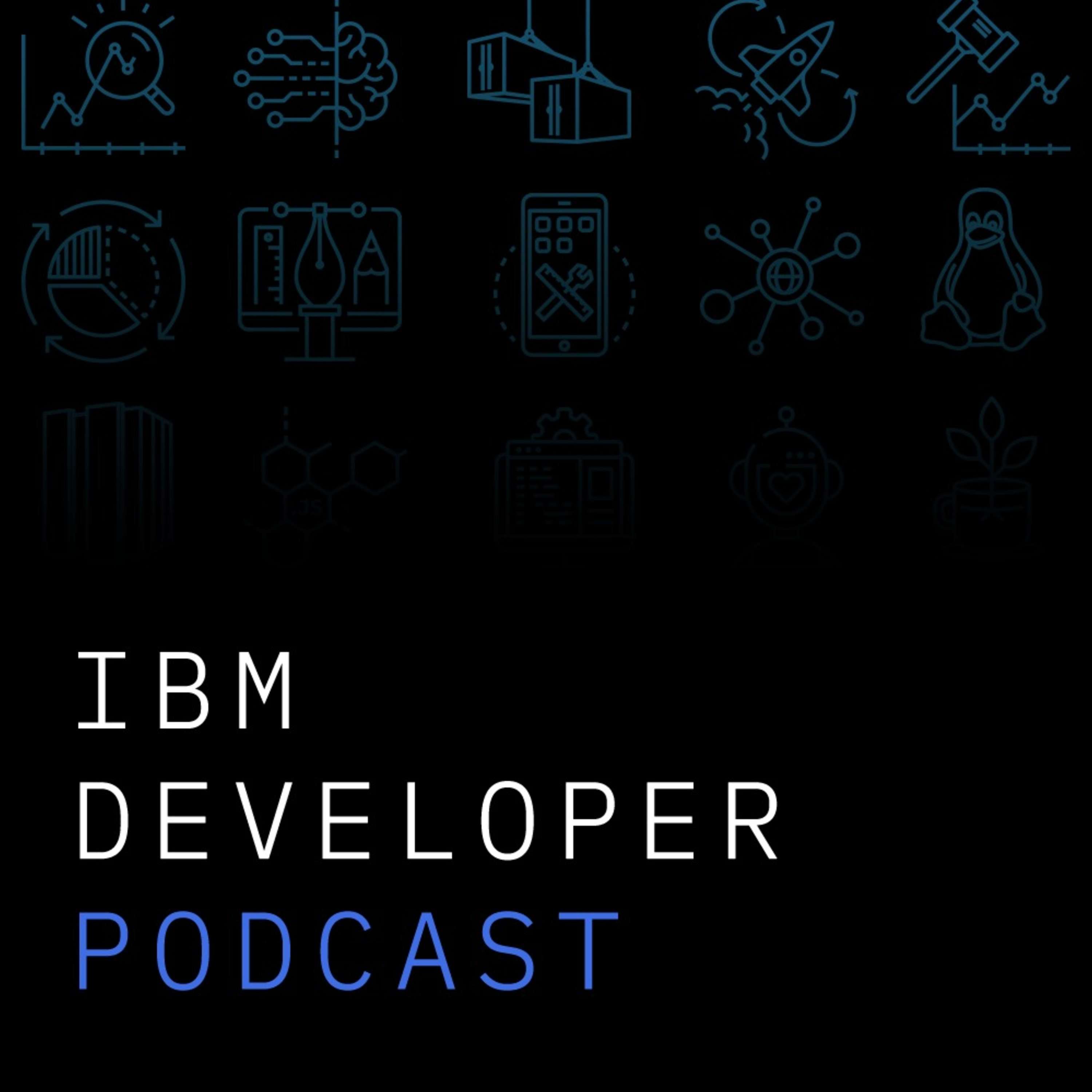Advocacy & Application Integration with TCS & IBM
- 0.5
- 1
- 1.25
- 1.5
- 1.75
- 2
Luke: In this episode, I'm pleased to bring you a conversation with Pooja Mistry and Santhosh Ramanathan. Pooja is a developer advocate with IBM, and Santhosh is a Cloud Pak Integration consultant at TCS, a leading global IT services consulting and business solution company. We're going to be talking about how they work together as partners on enterprise application integration. This should be an interesting case study on how enterprise business and independent software vendors work together. Hello, Pooja. Hello, Santhosh. Welcome to the podcast.
Pooja Mistry: Hi, Luke. Thank you so much for inviting us for this session. We're really excited to talk to you and also share some of our insight. Santhosh and I have been working together over the past year on lots of pieces of content around Cloud Pak for Integration and breaking down Cloud Pak for Integration from each of its services and trying to basically share the knowledge of how powerful that piece of technology is. We actually started our first session earlier this year in March, where we gave a pretty great overview on CP4I, Cloud Pak for Integration, and we did a whole workshop on App Connect. And we were able to speak at conferences such as the Digital Developer Conference, as well as Think. And just this past July we did another session on API Connect, and we are now going to be speaking at a Hybrid Cloud Build Conference in September. And so with our experience working together, I wanted to take this time to introduce you all to Santhosh and ask him some questions about his experience as an IBM cloud consultant at TCS, specifically in the integration space. So, Santhosh, how has it been working with IBM at TCS and how did you get involved in that world?
Santhosh Ramanathan: I've been with TCS for more than 11 years now, so I have worked with five, six clients or projects in TCS. And couple of years back, I moved to IBM incubation team. It's an IBM/TCS alliance team. So this is a team which is formed as part of providing center of excellence for all CP4I related projects or migration projects for CP4I. Right. So my career started and its use with IBM products only, so especially with inaudible API Connect. So these are my key products which I have worked so far. So I've seen the evolution of this product, and always we have a good relationship with TCS, IBM. I think more than a decade or more. So, whenever we need or whenever any clients need any help, IBM and TCS alliance is already there for help. And without any constraint, we can easily reach out to the corresponding team and get help. So, working in the IBM integration product and tool is always interesting and very challenging also, the projects. But the tools on IBM team is always there to help us out if there is any problem.
Pooja Mistry: And so I also know that you are part of the IBM Champions Program as well. Can you talk to us a little bit about what that program is and how you got involved and what your experience there has been?
Santhosh Ramanathan: Yeah, definitely. So, as I said, I joined this TCS/IBM alliance team couple of years back. As soon as I joined, I keep hearing about IBM Champions because there are a lot of IBM champions in TCS team and especially the team which I'm working on. So I keep hearing about that and I was wondering what exactly it is. And I got introduced to IBM Champion community through one of my colleagues and from my manager. He also persuaded me to play for IBM Champion last year. So we have done some projects related to IBM integration migration tools. So, with that, I was able to apply for IBM Champion, and luckily I got IBM Champion for 2021. So, with that, the journey started. It's like more than eight months now. So, working with Libby is always very easy, and we can learn a lot of things from her. And IBM Champions are always great peers, and they help us out if there is any problem we are facing with respect to the development or any products or help needed. So that way this IBM Champion journey is still going on, and hopefully I also will apply for the next year, continue years. And since we are collaborating now more so, I hope I can get time to IBM Champion the next year also. And I'm happy to contribute to the Champion community. So that is any events or any conferences we are talking as part of Champion also. So it's great.
Luke: I just wanted to chime in here. I'm a big fan of the Champions Program. And last year I had done a whole series with Libby, and we called it Champions Chat, where we would do, every couple weeks, we would do a live stream talking with the champions. And just for folks who maybe aren't familiar, Champions is basically a club of the really top people across the world in a variety of industries, and they're all technical. And it's really a fascinating group, the creme de la creme of enterprise tech folks.
Pooja Mistry: And how would you say being an IBM champion has impacted your career? I know that you've been working with IBM from the start of your career, but can you give us a little more insight on how that's benefited your career as well?
Santhosh Ramanathan: Yeah. So initially when I was working as a developer or designer, I just constrained our focused on only what we do or whatever our strength of integration product is. So that's what our world revolves around. So, once I introduce to IBM Champion, you don't need to stick yourself as integration developer. So you can, since you're an IBM champion, you can attend any of the conferences and you can learn a lot. So, for example, any conference related to quantum computing happening, IBM champions are the first ones who gets to that seminars and webinars. So similarly, the hybrid cloud or any conference happening related to hybrid cloud or any other new thing coming up as part of IBM community, so we are the first one who gets to know about that. So that gives a lot of perspective and you can enhance your knowledge before it comes out to the external world. So that way you are always a step ahead with respect to IBM products. And as an IBM champion, that's what the main advantage and that helps us to grow our knowledge mode.
Pooja Mistry: Kind of going back to our partnership, you and I have done a lot of work in specifically the Cloud Pak for Integration space. And I find it the most empowering when I see our partners building and sharing knowledge but also building different ecosystems around that. And I know the big thing at TCS is building the Jumpstart Paks. Can you talk to us a little bit about all the Jumpstart Paks? And for those of you who are interested, we'll post the links of some of our sessions as well. But basically, at IBM we have Cloud Paks. This is a platform of different tool sets like in the integration world. It comprises of App Connect, API Connect, Enterprise Messaging. And then our partners such as TCS have built platforms on top of that as well. So, give us a little bit of an insight on that as well.
Santhosh Ramanathan: Yeah, sure. So, as I said, we formed a very small team initially a year back explicitly to address CP4I related projects. So Cloud Pak for Integration was introduced a couple of years back, and it started getting traction. And we are seeing a lot of clients are showing interest in moving towards containerization, and Cloud Pak is the best way to move your integration landscape into a containerization approach. So that's that. So you bought a CP4I license and you want to move. So now the next thing is you don't know what is the exact step you need to make so that you can quickly start moving your... Given the pandemic, you need to start moving your workloads quickly so that you can address the business needs. So, in that case, so we started collaborating with the IBM team, and we wanted to build Jumpstart with our accelerators and solutions on top of CP4I so that we can able to address or bridge the gap between CP4I and the clients that needs to migrate towards containerization approach. So that's way we ideated this approach and started implementing different tools and solutions as part of our Jumpstart Pak. So some of the tools, for example, we have one- click deployment tool, which is a DevOps tool for containerized deployment into CP4I. So the client now they don't need to start or build anything from scratch related to the DevOps process for CP4I. So we have for App Connect, API Connect, MQ, the DevOps tested approach is already in place so they can start adapting to CP4I and migrate their workloads quickly. And it is integrated with Transformation Advisor, which is a tool from IBM. So it automatically gives you the necessary refactoring meter as part of the migration. So that also we have included in our Jumpstart Pak. Then we have an integration which we already built with cloud native in mind. So traditional integration will be a monolith development, of course. So we built this integration patterns, keeping the cloud native in mind, so we have things in place which help them to quickly start importing the code and they can use it as a reference or they can use it as sample code to do a POC. So those things are also in place. And also we have assessment tool, which is another important tool which helps with the first phase of the migration. So you need to assess your existing landscape and you need to know what are the different kinds of things I need to make change as part of moving to CP4I. So all these things we have kept as assessment tool, which will give a high-level architecture diagram and high- level estimation, high- level written- off investment. So assessment toolkit is what will address the first phase of migration, so assess your landscape and provide a detailed, high- level architecture diagram of necessary changes needed in order to move to CP4I platform. So, all these combined together, we put it as a Jumpstart portal, so any references needed related to CP4I. So Jumpstart is the one- stop shop in TCS for our clients to start using it on data to their new CP4I portal.
Pooja Mistry: So what are some of the most interesting client use cases of integration you've seen, especially working with specific clients on this product? I know integrations are now ubiquitous, best products involved, high levels of integration, whether that's integrating APIs or integrating different applications within one another. But you and I chatted a little bit, especially in our earlier sessions about some use cases. So yeah, I'd love to get your insight on that as well.
Santhosh Ramanathan: Sure. Exactly. So the clients know, they understood the importance of integration as part of their business plan. So now integration is just as a technology, so it's a part of their business. They need to put integration in as one of their main business plan. So, as part of that, now they need to adapt to the new changes. So, for example, you have even- driven platform, which is real- time integration with all the different devices or any real- time events that needs to be captured. Previously it might be patched, which will be a day delayed or a couple of days delayed. So we just having impacting the business plan. For example, in the retail world or even in the insurance world, so all these things are impacted if it is delayed there by a day or two days. So now they need to adopt towards even-driven. So we have inaudible and even streams as part of CP4I. Similarly, inaudible is the new code or inaudible as part of the API development. So you can able to monetize your products and you can streamline your API products and customers to subscribe, and they plan respect to the subscriptions. So you have this API economy in place which help you to monetize the API products. Similarly, integration with the MQ App Connect should be seamless. So the business or clients are expecting a no- code or low-code kind of integration quickly in order to start their use case. So that's where the app print designer comes in the picture. So you don't need to do any coding. You just drag and drop and select configurations. The connectivity will be ready. So that way the adoption towards integration will be easier, and even a business person can able to play around with that. So that helps. They can understand, " Okay, this integration gives me a lot of business value." So quickly they can convert the idea into implementation. So, all these together as a single platform is another big advantage. So we don't need to go around different portals or different places to bring up your integration tools and start working with it. So you just have single platform, which is a platform navigator of CP4I, and you have access to all the integration tools of IBM. So that's another big thing which will attract the customers to adapt to CP4I. Similarly, OpenShift is a powerful platform. So you have logging analytics, everything as part of OpenShift. And now AI is coming as part of the powerful tool which can be used correctly and you'll get a very good business value and return on investment. Yeah. So I see a lot of adoption and lot of interest from clients to move to CP4I.
Pooja Mistry: Definitely. And so, Santhosh, you've mentioned so many of the things. So I just want to give our listeners a recap of some of the sessions that we've done. And we've had hands- on workshops of each of these tools that we've worked with. So App Connect, it's actually one of my favorite services because it provides such a seamless, low- code, no- code way to integrate big applications, enterprise applications, small applications, and create logic that allows you to basically transfer information from one application into another without the need of writing a lot of code. It provides a really great interface to build these event- driven flows. So some of these examples that we've worked with are basically we've taken some customer data like their email, phone numbers, whatever, and we can seamlessly put that into an application like Salesforce, and we can also then connect that application to different applications, Eventbrite or Asana or even send out emails. So you can create those end- to- end flows in a very seamless way. There's a really fun template that I love showing, which is the Slack translation template. So, if you ever want to translate your Slack messages into different languages... Especially we're working now globally around the world, especially in this pandemic. I'm sure something like this would help developers worldwide. It's a very seamless integration that you can create using Watson Language Translator as well as Slack APIs that you can build with App Connect. So definitely check out our workshop. We'll be linking all the links in this session for App Connect. And the last session we did was on API Connect. And like Santhosh mentioned, the big thing about today is the API economy. Everything is an API. Microservices are now integrated through APIs, and APIs are now becoming products more than they are these developer tools. And so the need for being able to have interfaces that allow developers to seamlessly create APIs, along with test APIs, as well as deploy and socialize and publicize APIs, that's a great tool. That's where API Connect comes into play. So we have a really interesting workshop there. So I would recommend you all take a look at that. And for those of you who are developers interested in building APIs as products, definitely check it out because it allows you to get some really great analytics from the APIs that you create as well as eventually monetize. And before I talk about our previous talks, I also want to talk about the next session that you and I are working on, which is on enterprise messaging. This is a new session that grounds out the entire Cloud Pak for Integration ecosystem. Definitely be on the lookout for enterprise messaging session where we'll be discussing MQ, which is message ques, and we'll be talking about event streams. And that's the last part of the Cloud Pak for Integration in the space. So we're planning to do that together in the fall. So we'll keep everyone interested in that as well. But before I go into that, I wanted to talk to you one more thing, Santhosh. Like you and I have collaborated quite a bit, and I guess I've been working as a developer advocate for this past year, and my role in advocacy is definitely to inspire and empower developers across the globe. But this has been one of your first times doing advocacy type of work. And so yeah, what was one of the most fun sessions that you've been part of? And what advice would you give to other partners, especially when they're collaborating and doing this type of work?
Santhosh Ramanathan: So, as I said, this is the first time I'm doing a developer advocacy program. So, at the beginning, it was very new for me, but when I started working with you, it's like working with a colleague who I know for more than five, 10 years. So it was very easy to collaborate. Yeah. So I didn't find difficulty in collaborating on which of my ideas or getting your ideas. So it was very smooth and easy for me too. So I think that's what your strength is about. So that way it was very easy for me to start working with you. So I just got confident on what we have to do. And our planning is super, and you come up with all the plans. So that plan is what helped us in our first session. But if you ask me to pick a fun session, then I will say the first session, because we prepared a lot. We know what we had to do. And the last 15 minutes during demo, you got your network disconnected. So that's where our planning got come into place. So we were able to, I think myself and inaudible, we immediately come up and we know what's next. So we were able to take it up and start doing the demo without any impact. So that was very good. That's a very good learning, which taught me planning is very important before any event. So that's thanks to making us prepared for the event. And each event is a very good learning for me. It makes me come out of my comfort zone. So, since I was more of a developer and designer, so I never give speech in this kind of session. So now collaborating with you as the first time, and that gives me a lot of learning. So what is my strength, what is my weakness with respect to the communication, so all those stuffs taught me it's not just technical learning; it's all about your soft skills also. So that was really interesting. So I advise all the partners who gets the chance, they can immediately grab the opportunity and start attending session or giving session along with you. So that gives a lot of... Because a lot of my colleagues who are not in this kind of advocacy or alliance team, so they are now interested. So they keep asking me, "So how you do that? What is the thing goes behind it?" That gives a good interest for the people. And they also come to know about the tool products, which we do demo. So it's really great. So we are actually sharing a lot of knowledge. We thought it's a very simple, accessible tool or development demo we are doing, but it's actually giving a lot of impact on the listeners who are attending. They are getting very good understanding of the tools. It gives them interest to explore the products. Yeah, anybody who gets a chance, definitely they need to share their knowledge using this session. And actually it opened the gate for Think Digital Developer Conference, which is very prestigious event. And you never thought like you will attend those events and you'll be a speaker at that event. But this kind of developer workshop will open lot of those kind of opportunities, and I'm glad I was part of those events.
Pooja Mistry: Yeah, no, it's been such a pleasure working with you all year. You said you've learned a lot from me, but I've actually learned a lot from you, especially with your experience working with some of these products on the ground. I think that experience, especially with partners, I feel like that's the biggest value that we get from working on the IBM side to working with our partners, because they see what it looks like on the ground and what their clients work with. And we come from the development side and we're showing it from an educational point of view. But working with you has really brought insight not only to me but also to our community and developers worldwide. Like what are the actual true impacts and use cases and implications of using some of these products? So it's been such a pleasure to work with you as well, Santhosh. And I also recommend, like Santhosh mentioned, partner advocacy, client advocacy. This is a win- win for both IBM as well as our partners. We are building an ecosystem here, and we're also sharing with developers across the globe. So I would recommend anyone who is interested to collaborate with us and build amazing sessions about some of the technology that we jointly work on. Yeah, it's been fun. And Luke, thank you so much for inviting us and allowing us to speak about the work we've been doing throughout the year. And yeah, that's all I have actually. Do you have anything else, Luke?
Luke: I wanted to say, I think it's really interesting that you're taking the actual working relationship that you have in the business and then you're able to share that in advocacy. But what I love about this is that it's some app modernization, it's implication integration, and you actually have that real- world experience, and then you're able to share that. So I could see how this is, if folks listening have these sorts of problems and you're dealing with this sort of business, what a great resource because it's actually the real deal. It's stuff that you're doing in the real world that's happening, and then you're able to share that. So I really appreciate you taking the time to share your experiences and your working relationship because that's another thing on the podcast I love to find out about. Whether it's open source or whether it's a proprietary product or whether it's a partnership like this, I really want to know how does that work in the real world? So it's been a pleasure to have you on.
Pooja Mistry: Yeah. And Santhosh has been a great partner just to work with. So much deep insight and knowledge. So I would recommend anyone who's interested in Cloud Pak for Integration to reach out to him as well. I think what we'll do is we can add our LinkedIns at the bottom as well and share that. So, if anyone wants to reach out and have further questions, feel free to stay in touch. So yeah, anything else, Santhosh?
Santhosh Ramanathan: No. It was really great session, and thanks, Luke, for arranging this. And I'm very happy for this session and sharing our knowledge with the greater community. Yeah. So it's great for us.
Pooja Mistry: Thank you, everyone. Have a great day.
DESCRIPTION
In this episode, we are pleased to bring you a conversation with Pooja Mistry and Santhosh Ramanathan. Pooja is a developer advocate with IBM and Santos is a Cloud Pak for Integration consultant at TCS, a leading global it services consulting and business solutions firm. We're going to be talking about how they work together as partners on enterprise application integration.
This should be an interesting case study on how enterprise business and independent software vendors work together.
Today's Guests
Santhosh Ramanathan








